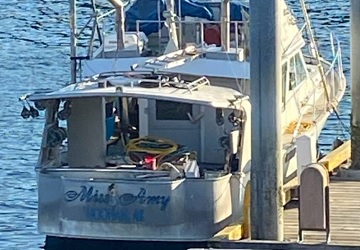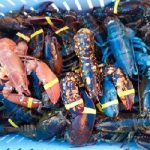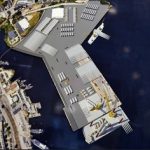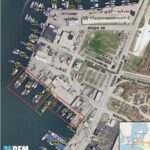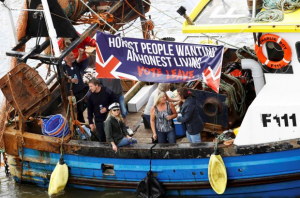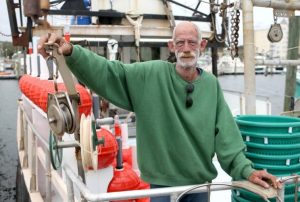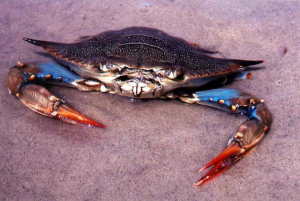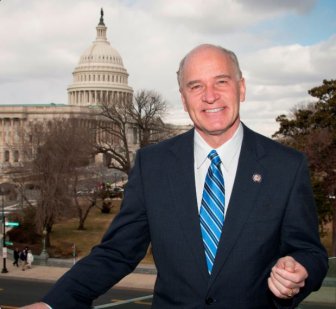Tag Archives: Southeast
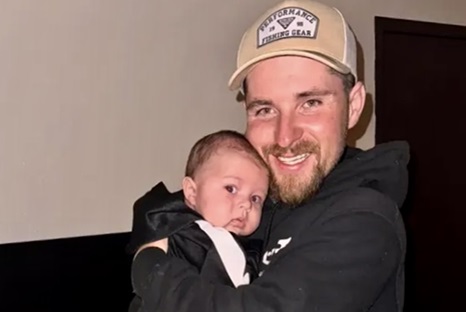
F/V Wind Walker: Utah man, 4 others missing after fishing boat capsizes off Alaska coast
A Utah man and four others are missing after their fishing boat capsized early Sunday morning off Couverden Point, Alaska, about 24 miles southwest of Juneau. According to a press release by the U.S. Coast Guard, the search for the missing fishermen was suspended Monday morning, one day after they received a Mayday call that the vessel was overturning. Among those aboard the commercial fishing vessel Wind Walker was Alex Zamantakis, 28, who grew up in Magna. A GoFundMe account set up by family members said funds will go Zamantakis’ girlfriend, and their six-month-old son, Alex. more, >>CLICK TO READ<< 12:33
Families of 5 missing crew members worried after Coast Guard suspends search for capsized fishing boat
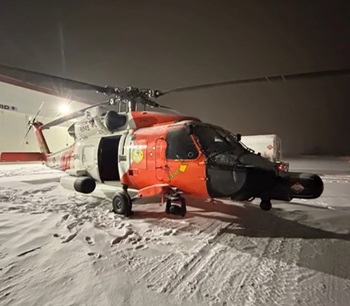 The U.S. Coast Guard suspended its search Monday after the fishing vessel F/V Wind Walker capsized early Sunday near Point Couverden, the southern tip of a small island in Southeast Alaska. Coast Guard officials confirmed Tuesday the names of the five crew members of the ship who are missing after the boat capsized: Travis Kapp, Jacob Hannah, Alex Ireland, Emilio Celaya-Talamanter, Michael Brown. Family members of Alex Ireland said Alex preferred to use the last name Zamantakis. His father Mike Zamantakis said they are struggling with the news that the search was suspended. “My hope is that last radio communication from the captain of the ship saying that the men were capsized but they were trying to get in the lifeboat,” Zamantakis said. “They haven’t found the lifeboat either, so that’s my glimmer, that’s my sliver of hope that Alex and his buds will be sitting under some logs or some leaves on a beach someplace trying to stay warm till they’re rescued.”Video, more, >>CLICK TO READ<< 07:24
The U.S. Coast Guard suspended its search Monday after the fishing vessel F/V Wind Walker capsized early Sunday near Point Couverden, the southern tip of a small island in Southeast Alaska. Coast Guard officials confirmed Tuesday the names of the five crew members of the ship who are missing after the boat capsized: Travis Kapp, Jacob Hannah, Alex Ireland, Emilio Celaya-Talamanter, Michael Brown. Family members of Alex Ireland said Alex preferred to use the last name Zamantakis. His father Mike Zamantakis said they are struggling with the news that the search was suspended. “My hope is that last radio communication from the captain of the ship saying that the men were capsized but they were trying to get in the lifeboat,” Zamantakis said. “They haven’t found the lifeboat either, so that’s my glimmer, that’s my sliver of hope that Alex and his buds will be sitting under some logs or some leaves on a beach someplace trying to stay warm till they’re rescued.”Video, more, >>CLICK TO READ<< 07:24
Coast Guard suspends search for 5 missing fishermen in Southeast Alaska
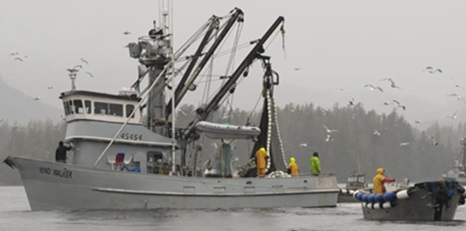 The U.S. Coast Guard on Monday morning suspended the search for survivors from a Sitka-based commercial fishing boat that capsized early Sunday morning with five people aboard. The Coast Guard said the search for the 52-foot F/V Wind Walker continued for nearly 24 hours and covered more than 108 square nautical miles. The boat’s crew issued a mayday call at 12:07 a.m. Sunday “reporting they were overturning,” the Coast Guard said. Watchstanders in Juneau received no additional response, they said, but the boat’s emergency beacon signal was located near Point Couverden in Icy Strait, southwest of Juneau. On Sunday, the Coast Guard said searchers had located seven cold-water immersion suits and two strobe lights but no signs of any of the people aboard the vessel. more, >>CLICK TO READ<< 17:02
The U.S. Coast Guard on Monday morning suspended the search for survivors from a Sitka-based commercial fishing boat that capsized early Sunday morning with five people aboard. The Coast Guard said the search for the 52-foot F/V Wind Walker continued for nearly 24 hours and covered more than 108 square nautical miles. The boat’s crew issued a mayday call at 12:07 a.m. Sunday “reporting they were overturning,” the Coast Guard said. Watchstanders in Juneau received no additional response, they said, but the boat’s emergency beacon signal was located near Point Couverden in Icy Strait, southwest of Juneau. On Sunday, the Coast Guard said searchers had located seven cold-water immersion suits and two strobe lights but no signs of any of the people aboard the vessel. more, >>CLICK TO READ<< 17:02
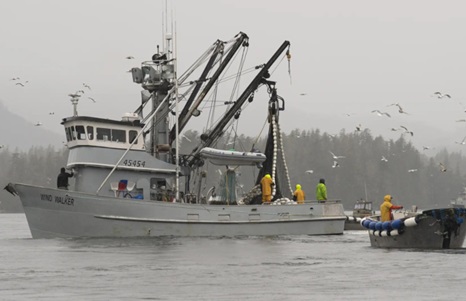
US Coast Guard launches search operation for missing fishermen after vessel capsizes in Alaska
F/V Wind Walker, a vessel approximately 50-foot (15-metre) in length, transmitted a distress signal indicating the boat was overturning at approximately 12.10 am. The Coast Guard’s subsequent communication attempts received no response. Search teams located seven cold-water immersion suits and two strobe lights floating in the search zone. The rescue operation encountered severe weather conditions, including heavy snowfall, winds reaching 60 mph (96 kph), and 6-foot (1.8-metre) seas. The Gulf of Alaska region was under an active winter storm warning during this period. According to people aware of the vessel, which departed from Icy Strait just south of Point Couverden, five people were aboard. However, the Coast Guard has yet to verify this number officially. more, >>CLICK TO READ<< 06:14
Coast Guard and good Samaritans search for people on board fishing boat that capsized in seas off Southeast Alaska
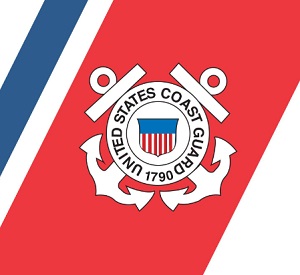 The U.S. Coast Guard and good Samaritans, including a state ferry, are searching Sunday for multiple missing people who were on board a commercial fishing boat that reportedly capsized in cold seas in Icy Strait, southwest of Juneau. Five people were thought to be on board based on “reports from individuals familiar with those aboard the vessel,” the Coast Guard said in a statement. Searchers have found cold-water safety gear and other emergency items but no people yet in the search area, according to the Coast Guard. The Coast Guard reported heavy snow and strong winds up to 45-60 mph in the area Sunday, with 6-foot seas. Around 12:10 a.m. Sunday, crew on board the roughly 50-foot-long vessel Wind Walker reported that “they were overturning” in a mayday call that was received by Coast Guard Sector Southeast Alaska watchstanders, the Coast Guard said. more, >>CLICK TO READ<< 15:33
The U.S. Coast Guard and good Samaritans, including a state ferry, are searching Sunday for multiple missing people who were on board a commercial fishing boat that reportedly capsized in cold seas in Icy Strait, southwest of Juneau. Five people were thought to be on board based on “reports from individuals familiar with those aboard the vessel,” the Coast Guard said in a statement. Searchers have found cold-water safety gear and other emergency items but no people yet in the search area, according to the Coast Guard. The Coast Guard reported heavy snow and strong winds up to 45-60 mph in the area Sunday, with 6-foot seas. Around 12:10 a.m. Sunday, crew on board the roughly 50-foot-long vessel Wind Walker reported that “they were overturning” in a mayday call that was received by Coast Guard Sector Southeast Alaska watchstanders, the Coast Guard said. more, >>CLICK TO READ<< 15:33
Alaska Trollers Association takes a swing at Fish and Game and Alaska sport fishery over shortened season
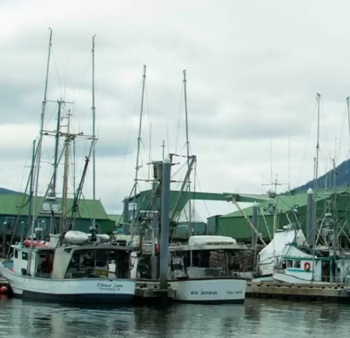 Commercial trolling for Southeast king salmon closed for the season in July and will not reopen this month. That marks the second summer in a row their season has ended before they could catch all of their yearly king allocation under an international agreement. Now, the trade group representing them — the Alaska Trollers Association — is outraged. Southeast trollers have around 15,000 kings left in their annual allocation. That’s the number of kings trollers get to catch under an agreement between the United States and Canada known as the Pacific Salmon Treaty. The trollers caught most of their allocation — 83%, or 82,000 fish — during the first and longest opener in July. Typically, the rest of the allocation would be caught in a mid-August opening. But that second opening won’t be happening. more, >>CLICK TO READ<< 16:02
Commercial trolling for Southeast king salmon closed for the season in July and will not reopen this month. That marks the second summer in a row their season has ended before they could catch all of their yearly king allocation under an international agreement. Now, the trade group representing them — the Alaska Trollers Association — is outraged. Southeast trollers have around 15,000 kings left in their annual allocation. That’s the number of kings trollers get to catch under an agreement between the United States and Canada known as the Pacific Salmon Treaty. The trollers caught most of their allocation — 83%, or 82,000 fish — during the first and longest opener in July. Typically, the rest of the allocation would be caught in a mid-August opening. But that second opening won’t be happening. more, >>CLICK TO READ<< 16:02
State sets much larger harvest guideline for Southeast golden king crab
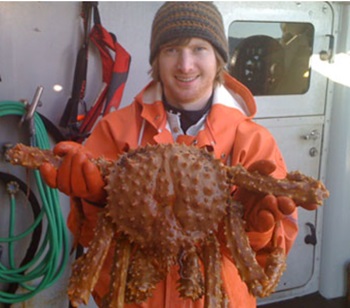 The commercial tanner crab and golden king crab season in Southeast opens at noon Feb 17. A change this year will require golden king crab fishermen to call in to the Department of Fish and Game every day to report which management area they plan to fish, to help fisheries staff better anticipate and manage the harvest. The department announced the golden king crab guideline harvest level in southern Southeast, Registration Area A, at 272,500 pounds, with specific areas seeing notable changes. The number is almost three times the size of last year’s guideline harvest, with most of the increase in a single portion of the region. The increase is the result of meetings between the fishing industry and state fisheries management. more, >>click to read<< 15:00
The commercial tanner crab and golden king crab season in Southeast opens at noon Feb 17. A change this year will require golden king crab fishermen to call in to the Department of Fish and Game every day to report which management area they plan to fish, to help fisheries staff better anticipate and manage the harvest. The department announced the golden king crab guideline harvest level in southern Southeast, Registration Area A, at 272,500 pounds, with specific areas seeing notable changes. The number is almost three times the size of last year’s guideline harvest, with most of the increase in a single portion of the region. The increase is the result of meetings between the fishing industry and state fisheries management. more, >>click to read<< 15:00
When a Coast Guard helicopter crashed in Southeast Alaska, first on the scene were the helicopter crashed it came to rescue
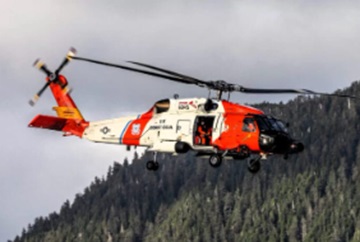 The first people at the scene of Monday night’s crash of an Air Station Sitka helicopter were the crew of the distressed fishing vessel it was sent to assist. The two brothers aboard the Lydia Marie played a critical role in the rescue of the downed air crew. Logan Padgett is the captain of the Lydia Marie, a 44-foot wooden troller based in Wrangell. The Lydia Marie began taking on water around 8 p.m. Monday in the rough seas of Frederick Sound. Padgett sent out a mayday and steered for the protected northern shore of Read Island in Farragut Bay. >>click to read<< 08:05
The first people at the scene of Monday night’s crash of an Air Station Sitka helicopter were the crew of the distressed fishing vessel it was sent to assist. The two brothers aboard the Lydia Marie played a critical role in the rescue of the downed air crew. Logan Padgett is the captain of the Lydia Marie, a 44-foot wooden troller based in Wrangell. The Lydia Marie began taking on water around 8 p.m. Monday in the rough seas of Frederick Sound. Padgett sent out a mayday and steered for the protected northern shore of Read Island in Farragut Bay. >>click to read<< 08:05
Ordinary Heroes: Fishermen Turn Rescuers in Treacherous Seas – In the midst of a treacherous night at sea, the crew of the fishing vessel Lydia Marie found themselves unexpectedly shifting roles from the ones in need of rescue to becoming the rescuers. Captain Logan Padgett and his younger brother, ordinary fishermen, were thrust into action to aid the downed air crew of an Air Station Sitka helicopter. >>click to read<< 11:24
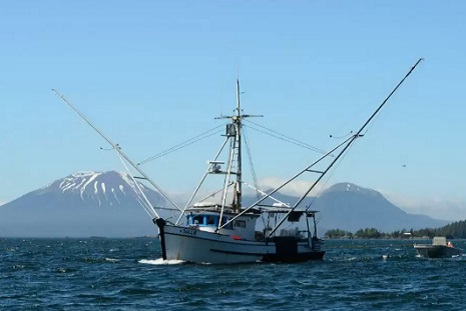
Fish plentiful, but fishermen scarce for Southeast Alaska’s first summer king opening
The numbers are in for the first opening in the summer troll fishery for king salmon in Southeast Alaska. The 12-day season saw more chinook landed than expected, despite fewer boats being on the water. Southeast trollers brought in about 85,000 king salmon from July 1 to July 12, around 8,000 fish over the target for the first opener of the season. At first, it might look like enthusiasm played a role, as it was only on June 21 that the US Ninth Circuit Court of Appeals issued a stay that allowed the fishery to occur at all. But that was not the case. Grant Hagerman manages the troll fishery for the Alaska Department of Fish and Game. He says even fewer trollers participated this summer than in 2022. >click to read< 10:37
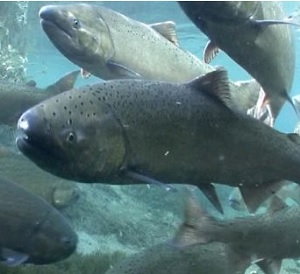
Chinook troll fishers in Southeast Alaska to put hooks in water July 1, but how many can they catch?
One day after the Ninth Circuit Court of Appeals overturned a Seattle judge’s ruling that had shut down the Southeast Alaska chinook troll fishery, the Alaska Department of Fish and Game delivered the catch limit news to the troll fishermen, specifying the number of kings they are allowed to catch during the upcoming season. Commercial trollers will have a total allocation of 74,800 chinook salmon during the first retention period, which begins July 1. Based on data from past years, the department thinks that the goal will be reached in 9-10 days, depending on weather. >click to read< 09:35
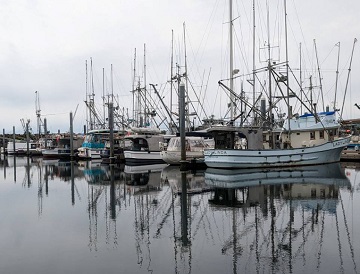
‘It’ll be a disaster’: Southeast Alaska fishermen fear looming closure of king salmon fishery
“I’m optimistic, but I’m also scared as heck,” said Eric Jordan, a lifelong fisherman and resident of trolling stronghold Sitka at the standing room-only meeting with federal National Marine Fisheries Service officials. The closure of the king salmon fishery in Southeast Alaska would be economically devastating, according to many in the region who rely on the valuable fish for their annual income. A federal judge in Washington state effectively shut down the fishery in May in response to a lawsuit brought by Wild Fish Conservancy, a Washington organization. The suit contends that the fishery should be closed to protect endangered killer whales in Puget Sound that feed on chinook salmon. >click to read< 11:46
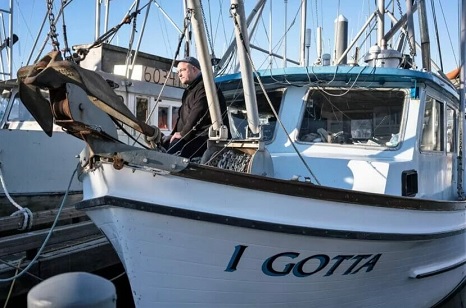
3 Alaska trollers contemplate a summer without chinook
Barring a stay, or a successful appeal, or other eleventh-hour legal action, there will be no troll fishery for king salmon in Southeast Alaska either this summer or winter. The fisheries have been canceled by order of the U.S. District Court of Western Washington on largely procedural grounds. According to the ruling they stem from a violation of the Endangered Species Act, and the failure of the National Marine Fisheries Service to fully address the impact of Alaska’s king salmon trollers on an endangered population of orcas in Puget Sound called Southern Resident killer whales. No other salmon species or commercial gear group or sport fishery anywhere on the entire Pacific Northwest coast is affected by the order, just commercial trolling for king salmon in Southeast Alaska. photos, >click to read/listen< 13:39
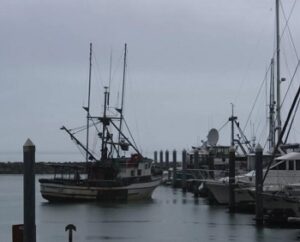
Southeast’s 2022 commercial salmon harvest was half as large last year’s, but worth millions more
Commercial fisherman in Southeast hauled in just over 29 million fish across the five salmon species during the 2022 season – 17.5 million pink salmon, 9.3 million chum, 1.2 million coho, 1.1 million sockeye, and 257,000 king salmon. Even though the total harvest was half of last year’s (58 million catch), the total value at the docks for Southeast increasedby $12 million this year, to $144 million. That rise in value came primarily because the price per pound of chum salmon increased by half this year compared to last year, at a region-wide average of $1.18 per pound. >click to read< 08:34
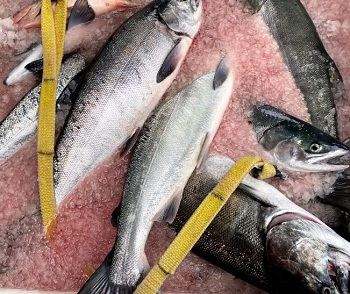
A rare summer-long chinook opener was not enough to lure SE trollers away from Chumageddon
Chinook trollers in Southeast may have left a sizeable portion of their allocation in the water when the summer season wrapped up on September 20 – but that doesn’t mean it was a bad year. Instead, it was a rather unusual year. “Being able to retain chinook for the entire summer is not something that they’re used to,” said Grant Hagerman, troll management biologist for the Alaska Department of Fish & Game in Sitka. Commercial trolling for king salmon was open all summer, with only three days off to allow silver salmon – or coho – time to escape into their natal streams, lakes, and rivers. Hagerman says the long summer season wasn’t due to a lack of king salmon; rather, it was an abundance of choice. Commercial trolling has changed. >click to read/listen< 12:37
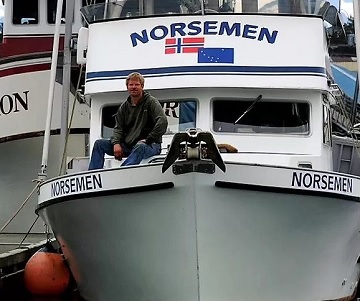
‘Alaskan Bush People’ get the cold shoulder while looking for land in Southeast
Reality TV stars from the long-running Discovery series “Alaskan Bush People” made a brief stop in the Southeast community of Petersburg earlier this month. The famous Brown family tried to buy land after living in Washington the last three years. But locals, including Mark Hofstad, did not welcome them as neighbors. Hofstad said he first noticed a boat belonging to the “Alaskan Bush People” at Petersburg’s South Harbor in early July. The harbor is home to many large commercial fishing boats, including Hofstad’s boat called the Norseman. Hofstad said when he saw staff from the “Alaskan Bush People” walking around, he started bugging the harbor master to move them someplace else. “Just cause I don’t want to look at ‘em,” >click to read< 13:50

Southeast Alaska’s upcoming tanner crab fishery could be the best in decades
The upcoming tanner crab fishery in Southeast Alaska is looking very promising. The fishery starts on Feb. 11, and the harvest and price could be historic. State crab managers haven’t seen this kind of encouraging preview for Southeast’s tanner fishery for a few decades. The Alaska Department of Fish and Game has tracked the tanner population through annual surveys since the late 1990s. “What we’re seeing is kind of historically high levels,” said Joe Stratman. He says the numbers look like they did when the surveys first started. It’s not only the harvest that looks good but also the price. >click to read< 17:08
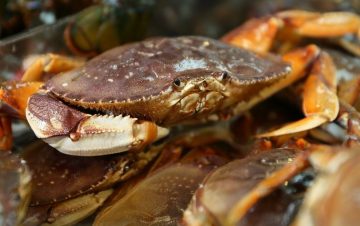
Pandemic economy brings record Southeast Dungeness crab prices
Southeast’s summer Dungeness crab season ended up being worth $13 million. That’s about double the $7.52 million average over the last decade. The summer fishery brought in just over 3.09 million pounds of Dungeness crab.,, the average price paid for Dungeness crab this summer was a record breaker at $4.21 per pound. “That’s a record high price for the fishery, said Joe Stratman,“This summer, in terms of total value and average price, it vastly exceeds the recent 10-year average,” >click to read< 12: 48

Chinook catch falls short in first Southeast troll opening. Fleet gets a another shot.
Southeast’s commercial troll catch of king salmon fell short of its target in the first summer opening in July. The fleet gets another shot at those chinook in a second fishing period that starts Friday, Aug. 13. The region’s king salmon catch is managed under the Pacific Salmon Treaty between the U.S. and Canada. Commercial trollers had 119,300 fish remaining on this year’s allocation under that agreement going into the summer season. That leaves a target of 53,000 for the second opening. Fish and Game expects it could take seven to 10 days for the fleet to hit that mark. >click to read< 13:33
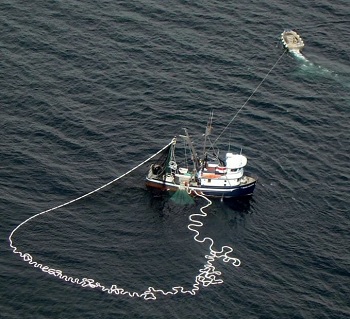
Southeast commercial salmon season off to slow start
Commercial net fishing for salmon in Southeast is off to a poor start in much of the region. Returns for most species are not meeting forecasts, which weren’t very high in the first place. With some exceptions, it hasn’t been a very encouraging start to the salmon season. “I guess for both net fisheries, gillnet and seine, we’re looking at poor chum salmon catches and poor sockeye catches and yet to be determined for pink salmon,” said Troy Thynes, the Alaska Department of Fish and Game’s management coordinator for commercial fisheries in the region. >click to read< 18:21

Coho salmon closures on tap for Southeast commercial trollers
Commercial salmon trollers in Southeast can expect a region-wide fishing closure for coho salmon in August. One part of the region is already being shut down because of low coho numbers. But a second king salmon opening is likely to keep the fleet on the water. Trollers have been targeting coho and chum salmon since the end of the five day opening for king salmon at the beginning of July. >click to read< 21:29
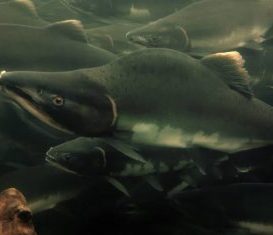
Southeast pink salmon forecast cause for concern
As the days grow longer and summer plans start to materialize, 18 million is a number on the mind of many across Southeast Alaska, especially those in numerous industries that rely on salmon fishing. Eighteen million is the number of pink salmon the Southeast forecast shows could be harvested in the 2019 commercial fishing season.,, “Salmon is the biggest portion of my income for sure,” said Stan Savland, commercial fisherman out of Hoonah and 20-year seiner. “The forecast is very alarming. I’m worried about this season because our recent odd year cycles are really what’s been carrying the seine fleet to make it.” >click to read<13:00
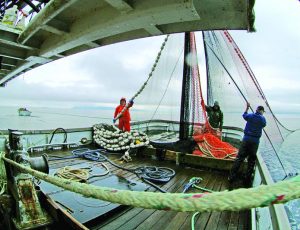
Southeast purse seiners to hold another permit buyback vote
Southeast Alaska purse seine fishermen are preparing to vote on another permit buyback, with an eye toward making the fishery more viable in an era of more efficient vessels and smaller salmon runs. The National Marine Fisheries Service is scheduled to send out ballots to fishermen starting Jan. 15 asking whether the fleet should take on $10.1 million in federal loans to buy out 36 permits, removing them from the fishery forever. If successful, the move would reduce the number of permits in the fishery to 279, down about 100 permits since 2012. >click to read<14:35
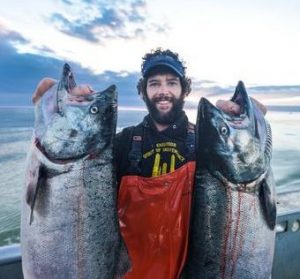
One king salmon worth more than a barrel of oil to AK fishermen; Updates for 2018/19
Salmon stakeholders are still crunching the numbers from the 2018 season, which up front has two distinctions: it ranks as one of the most valuable on record to fishermen at nearly $596 million, and at just over 114 million salmon, it’s one of the smallest harvests in 34 years. A breakdown by the McDowell Group shows the sockeye harvest was the second most valuable in 26 years; the chum catch was the third most valuable since 1975. Audio report, >click to read<17:06
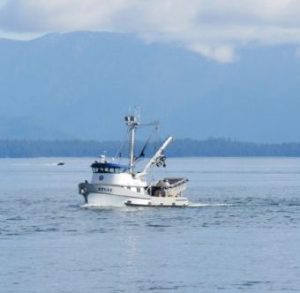
Southeast pink salmon catch lowest in over four decades
Southeast Alaska’s commercial pink salmon catch will wind up way below forecasts, the lowest harvest in more than four decades. The Alaska Department of Fish and Game’s pink and chum salmon project leader for Southeast Andy Piston said the region’s commercial catch this summer is 7.3 million fish. “And that would be the lowest region-wide harvest since 1976,” Piston said. “And our Southeast purse seine catch, and that’s the gear group that catches most of our pink salmon, is about 6.5 million which again is the lowest we’ve seen since the mid-1970s.” It’s not the lowest catch ever. >click to read<14:57
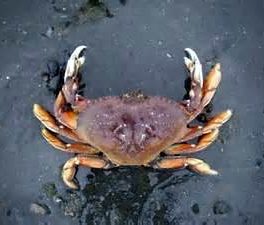
Southeast Dungeness crab fishermen will have full season in 2018
Southeast Alaska’s Dungeness crab fishery had a strong first week and will not have a shortened season like last year. The summer season for most of the region started June 15. The Alaska Department of Fish and Game announced in late June that crabbers would have a full two-month summer season. Fishermen caught more than 871,000 lbs. during the first week. The agency uses the first week’s catch to estimate how many crab will be harvested during the season. Tessa Bergmann with Fish and Game in Petersburg said this year’s estimate is the third highest on record. “Our harvest estimate for the 2018 season is just over 3.7 million lbs.,” Bergmann said. That is well above the 2.25 million lb. estimate required for a full season in Southeast Alaska. It will mean crabbers can keep fishing through Aug. 15. >click to read<15:08
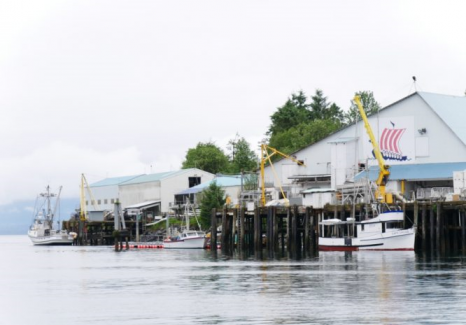
Optimism scarce as commercial fisheries start up in Southeast
Activity is picking up in the harbors in Petersburg this week as fishing boats and tenders prepare for the start of several commercial fishing seasons, but optimism is a little scarce on the docks. Fishermen this summer are feeling the impacts of reduced catches, low forecasts and increasing competition from marine mammals. In South Harbor, Charlie Christensen is readying the Erika Ann for some tendering work in the early summer. Then he’ll switch over to seining once pink salmon start coming in. He has a long list of bad news for his fishing season, stretching back to management decisions by the Alaska Department of Fish and Game for golden or brown king crab. He also points to whale predation on black cod,,, >click to read< 17:22
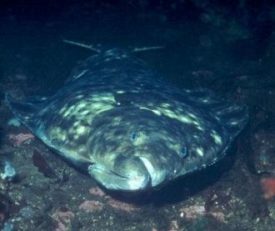
Halibut quotas for 2018 come in slightly lower than expected
The total allowable catch for the 2018 Pacific halibut season in the Gulf of Alaska and Southeast will be set slightly lower than what U.S. commissioners on the International Pacific Halibut Commission had asked for. The National Oceanic and Atmospheric Administration will publish a final rule in the Federal Register Tuesday setting combined charter and commercial quotas in Southeast, area 2C, at 4.4 million pounds. That’s about a 17-percent drop from the total allowable catch in 2017. >click to read<17:39
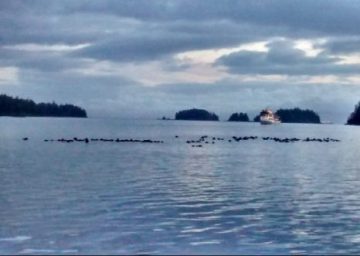
Stedman sponsors resolution to control sea otter growth
A Senate resolution seeking an increase in the number of sea otters hunted in Southeast Alaska is making its way through the legislative process. Sitka Republican Sen. Bert Stedman said the Senate Joint Resolution 13 is a way for the state to ask the federal government to do something about Southeast’s increasing otter population. “I think this is a good starting point for the conversation,” he said. “We live a different lifestyle up here, and we want to preserve it and keep it in balance. And having the sea otters virtually run unchecked,,, >click to read<19:30
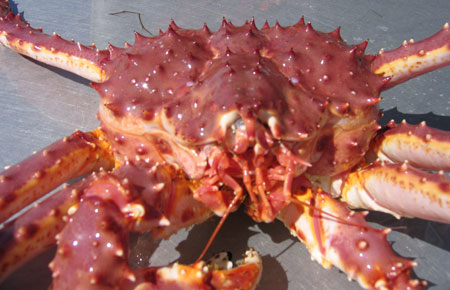
Commercial fishing for Southeast red king crab to open this fall after six years
Southeast Alaska will open to commercial fishing for red king crab this fall for the first time in six years. The crab population has seen a steady increase, according to state surveys. But whether the opening set for November 1 will be lucrative is still to be seen. Joe Stratman, who is Alaska Department of Fish and Game’s lead crab biologist for Southeast, said the red crab population has been on the rise since 2013. “Basically, in the last four or five years we’ve seen improvement in legal, mature biomass estimates in Southeast,” Stratman said. click here to read the story 15:30






